Data AnalySIS & ViSUALIZATION
Data analytics isn’t just about number crunching. It’s the segment of data science that lets you organize and summarize data, converting them into a form that helps draw meaningful and actionable insights. Organizations use data analytics to make informed decisions and derive significant business outcomes.
“We offer world-class data analytics solutions with our expert professionals who bring marvelous experience and profound knowledge spanning various industries. Our focus rests on understanding your challenges and bringing you the best resources who not only solve your current business problems but rather go the extra mile to suggest and implement best practices toward fostering business excellence. We don’t believe in just achieving customer satisfaction, instead, we strive to attain customer delight.”
Data workflow involves many stages – collecting data, cleaning it, organizing, analyzing, summarizing, and finally visualizing or presenting it. There are various categories of experts who serve each of these niche areas. Take a look at the various services we offer with regard to the data analytics space.
Our Array of World-Class Data Science Services

Data Analysts
Data analysts perform the task of cleaning, sorting, and analyzing enormous volumes of data across business functions and presenting them in an organized format. Our team of data analysts holds solid knowledge and strong expertise in this arena and can process your data, regardless of its volume, to glean meaningful insights.

Data Engineers
Data engineers are responsible for analyzing and interpreting information from various sources and developing them into a machine-readable format. Our data engineers are adept at their tasks and possess deep proficiency in designing and testing the system architectures which in turn enable data extraction and transformation. They hold a plethora of rich experience and are capable of completing these operations effortlessly.

Data Scientists
Data scientists who play a significant role in data workflow are professionals involved in collecting, analyzing, and interpreting huge data sets. We boast of astute and detail-oriented data scientists who can maneuver your massive data sets in no time and bring you the most reliable outcomes. Equipped with high-end programming, machine learning, and strong statistical acumen, they can tackle any level of data issues in a matter of time!
Machine Learning Scientists and Architects
Machine learning scientists and architects are experts, highly proficient, at handling huge volumes of data, and possess a strong understanding of complex algorithms. Our ML scientists are masters in this realm and possess outstanding abilities in the application of algorithms to business problems and drawing actionable results.
In addition, ML architects can automate the AI models and eliminate the repetitive, mundane processes in the business workflow. Besides, they are adept at inserting useful, innovative features in these intermediate steps to enhance productivity.
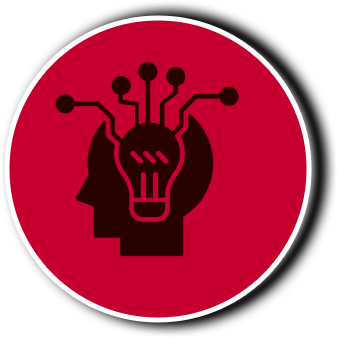
Machine Learning Engineers
Highly experienced ML engineers with a deep understanding of all aspects of ML, from data science and statistical analysis to ML frameworks and training. They are constantly researching and staying abreast of the latest developments in the field.
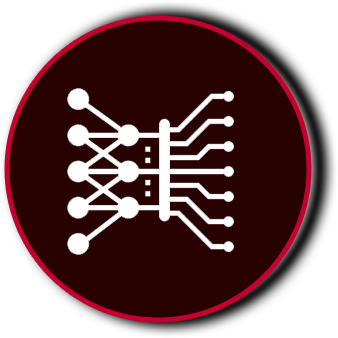
Deep Learning Architects
Deep learning architects with superb imaginative skills, ML expertise, and strong programming abilities to help you turn your abstract business problems into lucrative opportunities.

Data Modelers
Data analytics modelers with conceptual design and expert problem-solving skills. Help you attain your business goals by identifying gaps and finding solutions.



Simulation Engineers
Simulation engineers have a crucial link to modelers. Our versatile simulation engineers focus on carving customer-focused solutions for modeling and simulation business requirements. They are excellent communicators who gather your requirements meticulously and analyze them to write technical proposals, assist the engineering teams and recommend new technologies for evaluation.

Visualization Scientists
Visualization scientists constitute one of the core strengths of data science streams. Data analytics workflow remains incomplete without visualization. That said, we bring you top-notch visualization scientists and architects who collate the data points and present the information in a compelling and easy-to- consume format, that helps you glean actionable insights. From charts and graphs to trend lines and dashboards, visualization experts can present the data in any format that suits your business needs.



NLP Architects
An advancement over ML is Natural Language Processing, NLP. Our talented NLP architects carry rich experience in designing solution networks and mentoring ML architects. They can propose out-of-the-box recommendations and research ideas that can steer your business to newer destinations, letting you scale greater heights.

Vision Scientists
Vision scientists are an absolutely new wave of professionals who work with visual images to help human vision by portraying excellent displays on computer screens. We introduce you to our high-end vision scientists who are capable of visualizing and developing perfect images which can prove beneficial in solving human vision-related issues. While we certainly collect, analyze and present your data in a format that enables you to make informed decisions that drive business outcomes, we truly realize the importance of business “data”.
Unlocking the Power of Data Analysis In the era of digital transformation, businesses are increasingly relying on data analysis to gain valuable insights and make informed decisions. From understanding customer behavior to optimizing operations, data analysis has become an integral part of modern enterprises. In this article, we will explore different types of data analysis, delve into the process involved, and uncover the remarkable benefits it brings to organizations.
Data Analysis Types
Exploring the Different Approaches When it comes to data analysis, there are various types, each serving a purpose
Let’s take a closer look:

Descriptive Analysis
Summarize the data, identify patterns and trends, and provide insights into the data. Descriptive analysis is a powerful tool for understanding and interpreting data, and it is used in a wide range of industries and applications.
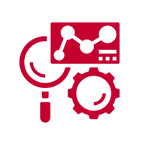
Diagnostic Analysis
Identify the root causes of issues, explain why things happen, and help improve performance. Diagnostic analysis is a powerful tool for understanding and addressing business problems, and it is used in a wide range of industries and applications.
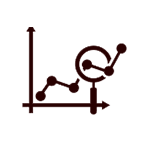
Predictive Analysis
Forecast future events, identify trends and patterns, and help businesses make better decisions. Predictive analysis is a powerful tool for understanding and anticipating future trends, and it is used in a wide range of industries and applications.
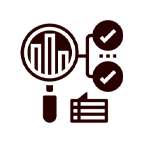
Prescriptive Analysis
Recommend the best course of action, based on data and insights, to help businesses achieve their goals. Prescriptive analysis is a powerful tool for making better decisions, and it is used in a wide range of industries and applications.

Data Collection
Gathering the Raw Material The first step in the data analysis process is collecting relevant and reliable data from various sources. This could include internal databases, external APIs, customer surveys, or web scraping. It is crucial to ensure the data collected is accurate, complete, and representative of the problem at hand.
Data Cleaning
Polishing the Data Gem Data collected may have inconsistencies, errors, or missing values. Data cleaning involves identifying and rectifying these issues to ensure the data is reliable and ready for analysis. Through techniques such as outlier detection, dealing with missing values, and removing duplicates, organizations can improve the quality of their data.
Data Exploration
Unveiling Hidden Patterns Data exploration involves using statistical methods and visualization techniques to gain initial insights into the dataset. By identifying trends, correlations, and outliers, organizations can form hypotheses and guide the subsequent analysis.
Data Analysis
Extracting the Nuggets of Wisdom In this stage, businesses apply specific analysis techniques according to their objectives and data characteristics. They employ descriptive, diagnostic, predictive, or prescriptive analysis methods to uncover patterns, relationships, and insights. Advanced tools such as machine learning algorithms and data mining techniques aid in extracting valuable information.
Data Visualization
Making Insights Come Alive Once insights are derived, data visualization plays a crucial role in presenting information effectively. With the help of charts, graphs, and interactive dashboards, organizations can communicate findings to stakeholders in a visually appealing and understandable manner. This enhances comprehension and facilitates decision-making.
Data Interpretation
Transforming Insights into Action Data interpretation involves translating the analyzed data into actionable insights that drive business decisions. By synthesizing the findings, organizations gain a deep understanding of the problem at hand and make informed choices to address challenges, optimize processes, and uncover opportunities.
Enterprise Benefits of Data Analysis
Empowering Organizations Implementing effective data analysis strategies can yield significant benefits for organizations across industries
some of the key advantages

Enhanced Decision Making
Data analysis enables organizations to make informed decisions based on solid evidence rather than gut feelings or intuition. With accurate insights, businesses can identify trends, predict outcomes, and take strategic actions.

Improved Operational Efficiency
Analyzing data can highlight inefficiencies and bottlenecks in operational processes. By identifying these areas, businesses can streamline operations, reduce costs, and increase productivity.

Better Targeting and Personalization
Data analysis helps organizations understand customer behavior, preferences, and needs. By gaining such insights, businesses can tailor their offerings, marketing strategies, and customer experiences to specific segments, leading to improved customer satisfaction and loyalty.

Fraud Detection and Risk Mitigation
Data analysis techniques can be employed to detect anomalies and patterns associated with fraud and risks. By proactively identifying potential threats, organizations can take preventive measures, safeguard their assets, and mitigate risks. Competitive Advantage: In a data-driven world, organizations that harness the power of data analysis gain a competitive edge.
Data Analysis & Security Services
We seek to understand data through visualizations and summary statistics. This helps us identify any outliers, missing values, or relationships between variables. Next up is hypothesis testing, where we develop and test statistical models to determine if there are significant differences or relationships within the data. This step helps us make informed decisions and draw reliable conclusions. Moving forward, we have predictive modeling, which aims to create models that can predict future outcomes based on historical data.
This technique involves using algorithms like regression, decision trees, and machine learning. Lastly, we have data visualization, which is the art of presenting data in a visually appealing and easy-to-understand manner. This allows us to communicate insights and findings effectively, making it an essential skill for every data analyst. In summary, data analysis is a crucial process that helps us unlock valuable insights from complex datasets. By mastering its concepts and techniques, you can make more informed decisions, solve business problems, and drive innovation in various fields. We will be your independent consultant on any mission, reach out for a security perspective on data.